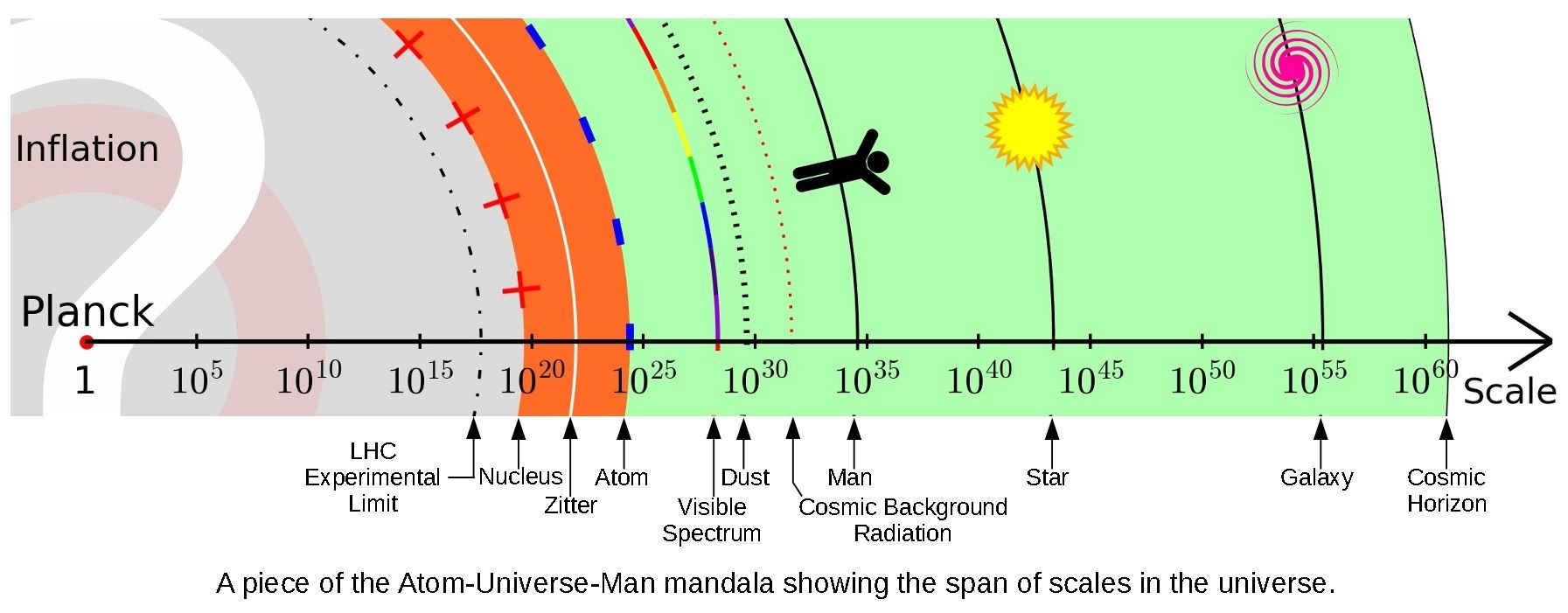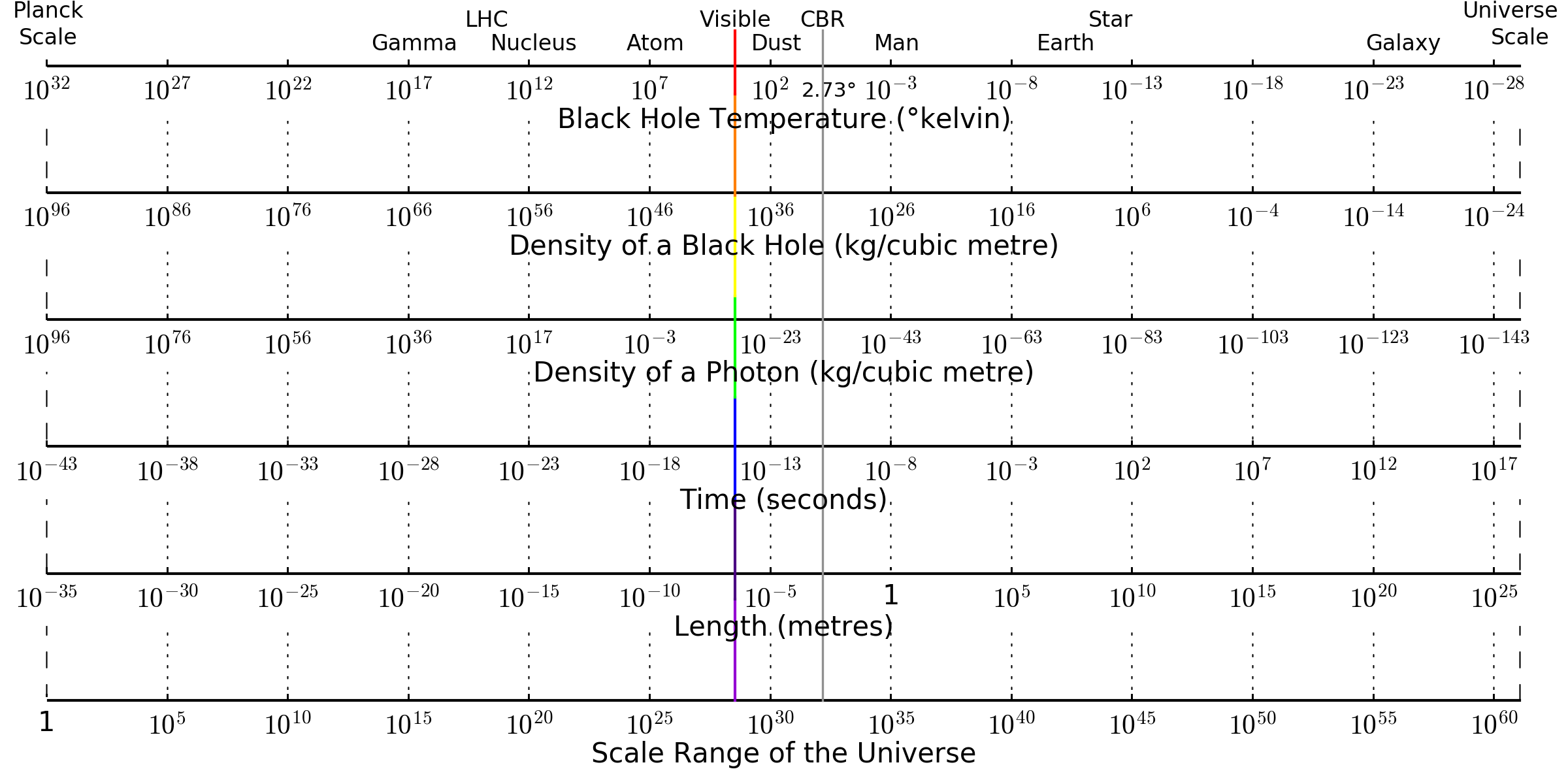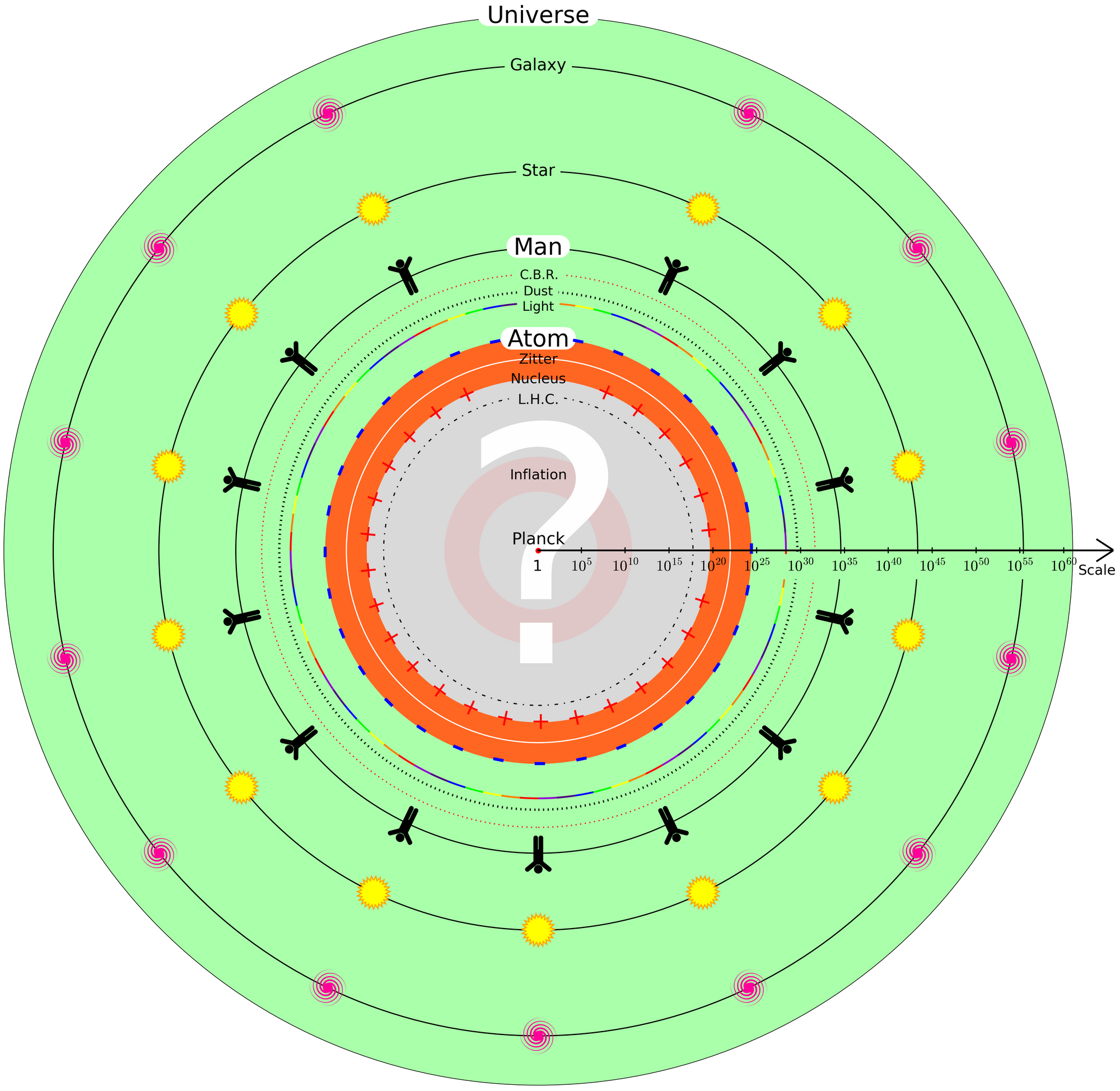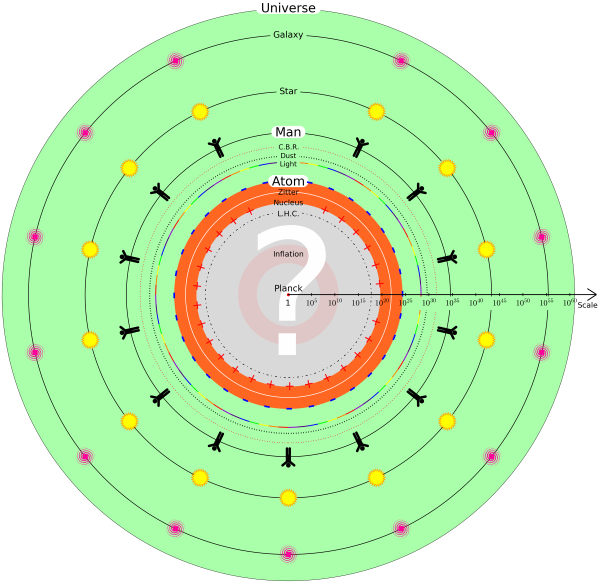Key Ideas
1) The Scale Dimension
The importance of the dimension of pure scale has not been understood in physics. It is not a linear dimension like ordinary measures of space and time, it is inherently logarithmic. The diagram below is a piece of the AUM mandala that shows the main features of the Universe from the smallest Planck scale to the largest visible scale at the cosmic horizon. It is a kind of cross section through a single atom, plotted on a logarithmic scale.

The next diagram shows six different measures over the same range of scales. Notice how the energy density of a photon, shown in the middle, increases dramatically as the scale gets smaller – space is NOT homogenous in the scale dimension! We inhabit the Goldilocks zone of the Universe at intermediate scales. A grain of dust weighing one Planck mass is at the midpoint of scale, sandwiched between the visible light spectrum and the cosmic background radiation (CBR).

A mandala is designed to change the observer's consciousness. Here is the whole AUM mandala:

2) Atoms Constitute and Run Reality
While physicists have catalogued many fundamental particles, it is only atoms and their constituent protons, neutrons and electrons that have lifetimes longer than one microsecond (10-6 second). Furthermore, photons of light of any wavelength greater than gamma rays can only be emitted or absorbed by electrons that are bound to atoms. Atoms that the only hardware running our material reality, and photons are their messengers.
3) Dual Representation of Information
All the detail in information that is laid out in time, like the list of instantaneous sound intensities that make up a sound recording, can be transformed into data that describes the amount of each of the frequencies present during the recording. The detail of when an event occurs in time is invisible in the frequency domain view, but in the time domain view, it is the details of frequencies present at any instant of time that are concealed, yet the two domains contain the same information, it is just encoded differently. The time domain information is dual to the frequency domain information, each can be converted into the other by the mathematics of a Fourier Transform. Much of modern science and technology depends on the Fourier transform; it is used in every smartphone, and whenever there is an advantage to be found from processing information in a transformed representation.
Quantum mechanics relies on several dual quantities that hinge around the Fourier transform: position<->momentum, energy<->time and spin<->phase. The unit of the hinge that each of these quantum dualities pivot around is Planck's constant, but the mathematics of quantum mechanics is almost the same as is used in the Fourier transform of a sound recording. The famous Uncertainty Principle is an essential feature of any Fourier transform, and it applies to sound or any other information, it is not a special feature of quantum mechanics as we are taught to believe.
Atoms are routers and portals, keeping the inner and outer domains of information in the Universe synchronized.
4) The Laws of Physics Seek Perfection
The Principle of Least Action is perhaps the most important idea in physics. All the most important equations of physics can be derived from this principle of Nature always seeking perfection. The Universe runs on Perfect OS.
